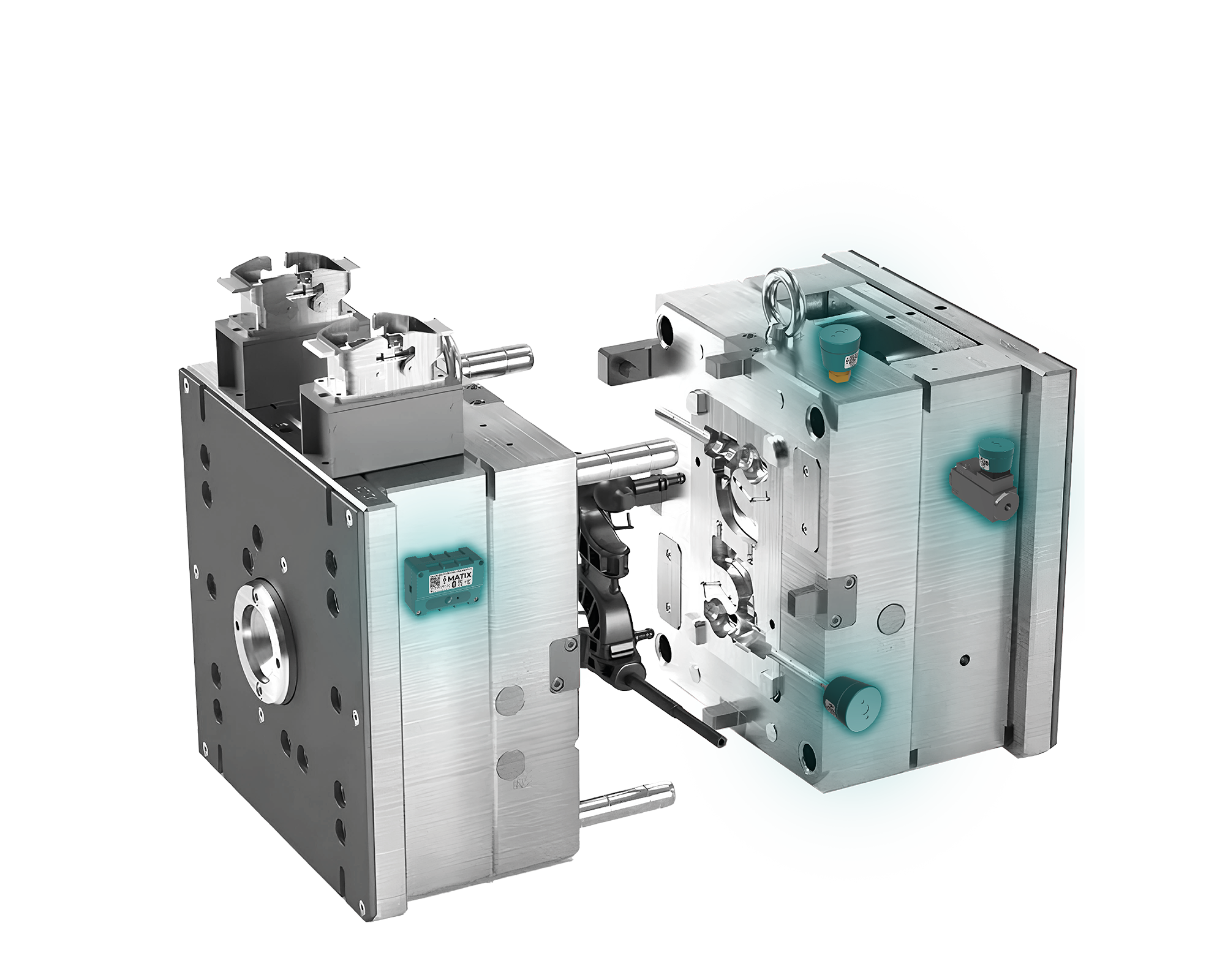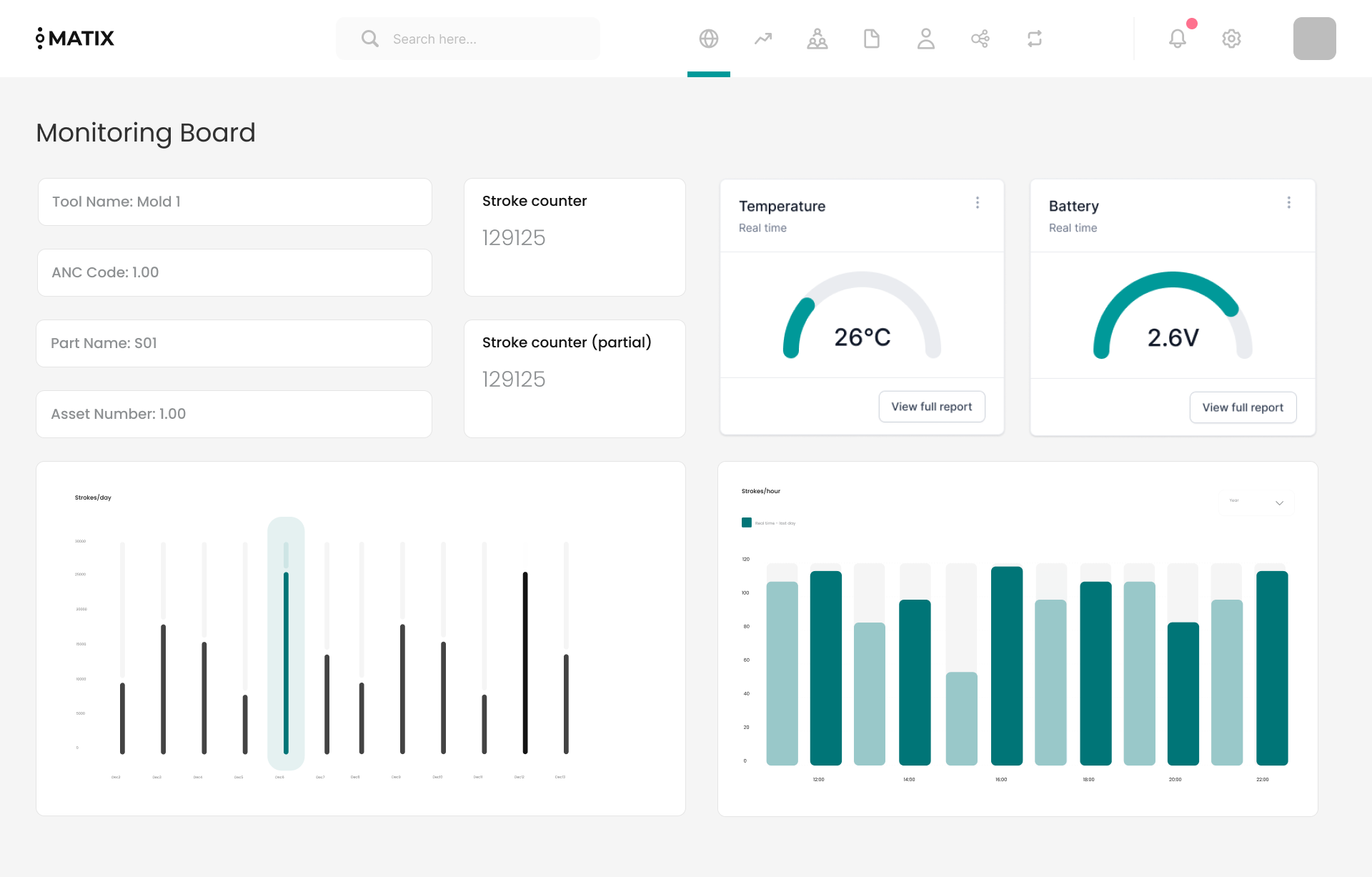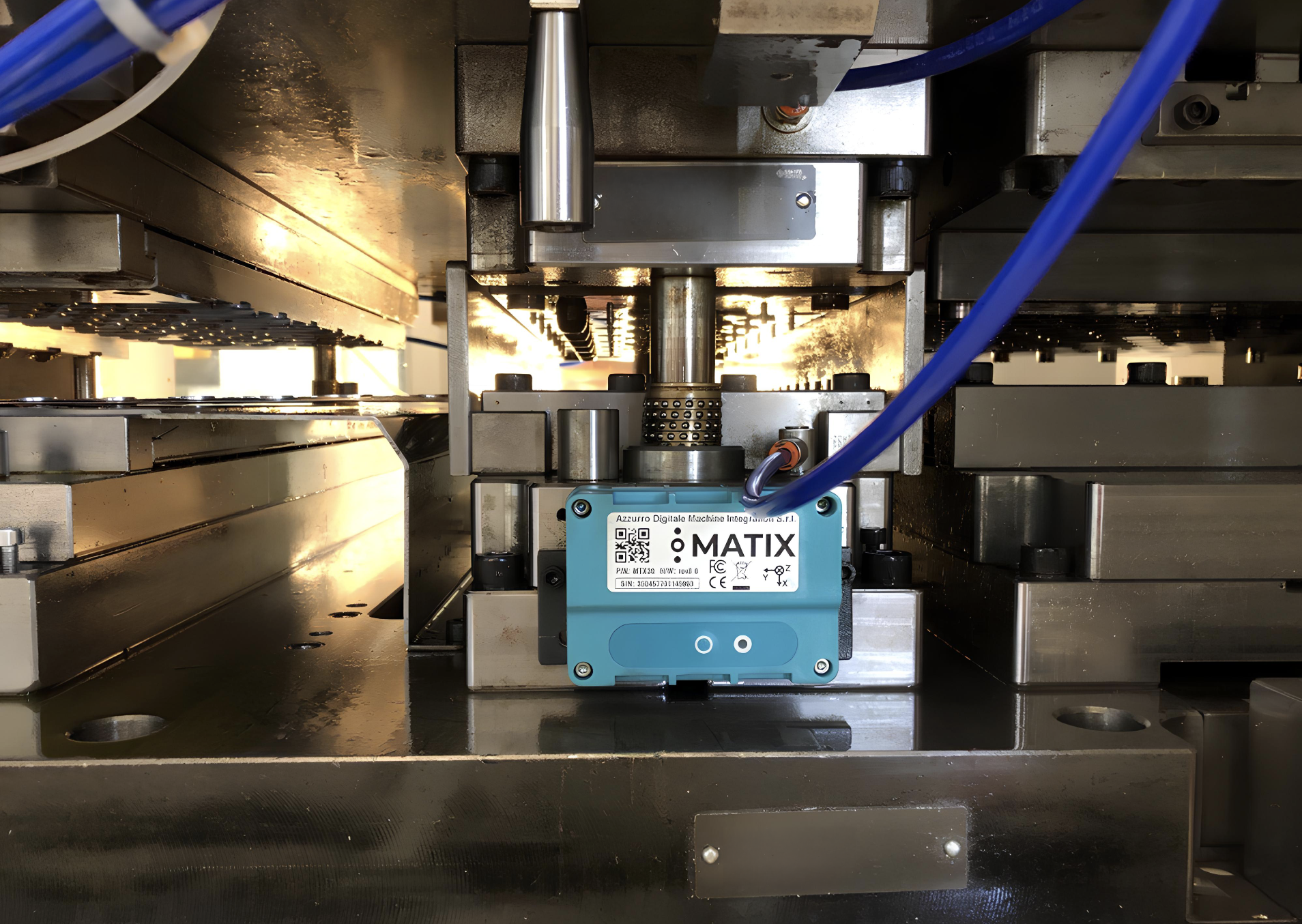July 19, 2025
9 min read
Top Condition Monitoring Techniques: A Comprehensive Guide

Condition monitoring is a proactive maintenance strategy designed to ensure the health and efficiency of machinery and tooling by regularly collecting and analyzing data on equipment conditions. In this guide, we’ll explore key techniques and benefits, helping you optimize maintenance and minimize downtime in your operations.
Key Takeaways
- Condition monitoring enhances operational efficiency by facilitating proactive maintenance, preventing unplanned downtimes, and extending equipment lifespan.
- Key techniques in condition monitoring, such as thermography, pressure profiling, cycle signature tracking, oil analysis, ultrasonic monitoring, are essential for detecting potential failures and optimizing maintenance strategies.
- The successful implementation of condition monitoring systems, exemplified by a global OEM specializing in cleaning technology using MATIX Smart Tooling, demonstrates significant cost savings and improved asset management through real-time data analysis.
Understanding Condition Monitoring
Condition monitoring aims to minimize downtime and optimize maintenance efforts by meticulously analyzing existing machinery & tooling and establishing clear objectives. A well-structured condition monitoring program necessitates careful planning, taking into account the types of assets and their operating environments.

As we'll see later on in Kärcher’s implementation of the MATIX Smart Tooling platform, shifting to predictive maintenance requires a strategic overhaul of traditional maintenance approaches. The MATIX platform exemplifies comprehensive lifecycle management, covering:
- Planning phase
- Operation phase
- Maintenance phase
- Decommissioning phase.
What is Condition Monitoring?
Condition monitoring is a proactive method designed to ensure asset safety and enhance operational efficiency by enabling directed maintenance. This approach is instrumental in various industries, including manufacturing, oil and gas, aviation, and power generation.
By detecting equipment failures early, condition monitoring helps prevent unplanned downtime and facilitates proactive maintenance. Online condition monitoring systems feature warning mechanisms that indicate excessive wear and potential maintenance needs, while electrical monitoring methods help determine necessary preventive actions to avert system failures.

The core of condition monitoring lies in its ability to eliminate unnecessary maintenance by scheduling repairs only when required, thus optimizing maintenance costs. Unusual vibration patterns in machinery can signal defects and potential breakdowns, making vibration monitoring a crucial technique to detect abnormalities.
Effective condition monitoring practices not only ensure asset longevity but also enhance workplace safety by identifying potential hazards before they cause accidents.
How Does Condition Monitoring Work?
Setting up a condition monitoring program involves several critical steps:
- Collecting data
- Installing sensors
- Establishing baselines
- Continuous monitoring

Various operating process sensors are deployed to gather real-time operational data, ensuring effective monitoring of equipment condition. The data collected is then analyzed using algorithms to predict machine failures and maintenance needs. This process enables informed decision-making that reduces unplanned downtime, enhances operational efficiency, and can generate alerts.
Effective condition monitoring relies on real-time data analysis to make timely maintenance decisions and improve system reliability. The integration of predictive analytics, machine learning-based algorithms, and advanced data management tools ensures that organizations can manage the extensive data generated and derive actionable insights.
This holistic approach transforms maintenance strategies from reactive to proactive, ultimately leading to better asset management and cost savings.

Key Condition Monitoring Techniques
Condition monitoring encompasses a variety of techniques tailored to assess the health of different machinery and systems, including machine health monitoring and a condition monitoring system. Each technique offers specific benefits and is suited to particular applications, ensuring precise data collection and analysis of machine health using condition monitoring software.
The choice of sensors and their strategic placement in critical areas are crucial for accurate data capture. Real-time insights from these techniques can pinpoint inefficiencies and facilitate process improvements, assisting in swiftly troubleshooting assets and comparing measurements.
Thermography
Thermography uses in cavity thermocouples to detect temperature variations in machinery, which can signal overheating or electrical faults. This technique is crucial for identifying problems early, as abnormal heat patterns can indicate issues such as bearing defects or electrical malfunctions.
By monitoring heat patterns, thermography allows for the early detection of overheating components, enabling timely maintenance and preventing more significant problems. This non-invasive method provides a visual representation of the equipment’s thermal condition, making it easier to identify and address potential issues through temperature monitoring.
Oil Analysis
Oil analysis is another critical technique in condition monitoring, focusing on the condition of lubricants in machinery. By regularly analyzing oil samples, maintenance teams can detect wear particles and contaminants, which indicate the machinery’s condition and the effectiveness of lubrication. This technique is essential for identifying signs of wear and potential mechanical failures early, allowing for timely interventions and preventing asset failure.
Chemical changes in lubricants can also signal underlying machinery problems, making oil analysis a vital component of a comprehensive condition monitoring program.
Ultrasonic Monitoring
Ultrasonic monitoring utilizes high-frequency sound waves to assess the condition of machinery and identify potential issues. This technique is effective in detecting defects, as well as detect leaks and changes in friction forces within equipment. One of the key advantages of ultrasonic monitoring is its ability to provide early warnings for machine part deterioration, allowing for timely maintenance.
Ultrasonic monitoring detects high-frequency sounds, identifying abnormalities other methods might miss, adding value to a comprehensive condition monitoring strategy.
Motor Circuit Analysis
Motor circuit analysis focuses on detecting electrical imbalances and insulation degradation in electric motors. This technique includes voltage-based and current-based tests, which help in identifying potential motor failures early. Monitoring electrical parameters like rotor speed and imbalances ensures reliable motor operation, preventing unexpected downtimes and reducing maintenance costs.
This method is particularly crucial for maintaining the health of electric motors used in various industrial applications.
Additional Condition Monitoring Techniques are Pressure profiling and Cycle signature tracking, which analyze the cavity pressure curve per shot to detect anomalies and drift and monitor shot-to-shot data patterns, flagging inconsistencies over time.
Implementing Condition Monitoring Systems
Implementing condition monitoring systems can transform maintenance strategies from reactive to proactive, leading to significant cost savings and improved asset management. This transformation involves several steps, including:
- Collecting historical data
- Installing sensors
- Establishing baselines
- Continuous monitoring
- Monitoring system.
Adopting these practices enhances maintenance planning, avoiding unplanned downtime, and improves overall operational efficiency, ultimately minimizing costly downtime.

Collecting Historical Data
Gathering historical data and analyzing historical trends is crucial for understanding a machine’s past performance and making informed maintenance decisions. This data includes maintenance records and relevant manufacturer documentation, which help identify patterns of wear and machine failure.
Analyzing historical data shapes effective condition monitoring plans by revealing trends that inform future maintenance strategies. This foundational step ensures that the condition monitoring program is built on a comprehensive understanding of the equipment’s operational history.
Installing Condition Monitoring Sensors
The extended network of sensors includes:
- Temperature sensors for thermal monitoring
- Pressure sensors for material flow validation
- Coolant flow sensors for cooling system verification
These sensors provide real-time data that is crucial for effective condition monitoring, enabling timely maintenance interventions and optimizing asset management.

Establishing Baselines
Establishing baselines involves:
- Defining normal operating ranges for various parameters to facilitate effective monitoring.
- Relying on historical data collection, which forms a baseline for comparison and helps in identifying trends over time.
- Gathering past maintenance data to help organizations identify patterns and plan future monitoring strategies.
Baseline measurements are critical for identifying typical operating conditions, allowing for the early detection of issues when deviations occur. This proactive approach ensures that maintenance actions are timely and based on accurate data.
Continuous Monitoring and Data Analysis
Continuous monitoring facilitates real-time data analysis, which is crucial for proactive maintenance and operational insights. Ongoing monitoring and data analysis provide real-time insights into equipment health, allowing for timely maintenance decisions and improving system reliability.
The integration of advanced analytics, such as automatic cycle count and time measurement, comprehensive downtime analysis with trend tracking, and Overall Equipment Effectiveness (OEE) monitoring, ensures that organizations can manage the extensive data generated effectively.
However, managing the extensive data generated by condition monitoring systems can overwhelm operators, hindering timely analysis and response. Proper data management tools are essential to avoid being overwhelmed and to derive actionable insights from the data.
Real-time performance tracking through condition monitoring leads to better decision-making regarding resource allocation and optimized maintenance strategies. Leveraging advanced analytics capabilities leads to significant improvements in equipment reliability and availability.
Benefits of Condition Monitoring
The importance of condition monitoring lies in its ability to detect early failures, thereby preventing downtime and saving on costs associated with storage for replacements.
Implementing condition monitoring leads to significant improvements in equipment reliability and availability, ultimately enhancing operational efficiency and safety.
Prevent Unplanned Downtime
Condition monitoring allows for the early identification of potential failures, which helps in scheduling maintenance and preventing unexpected equipment stoppages. Real-time asset health monitoring detects early signs of wear or malfunction, enabling timely repairs. This proactive maintenance approach significantly reduces unexpected equipment failures and operational halts.
For instance, Kärcher experienced a notable decrease in operational downtime post-implementation of the MATIX system, contributing to enhanced productivity.

Extend Equipment Lifespan
Condition monitoring facilitates the early detection of mechanical issues in rotating equipment, significantly prolonging equipment service life. Identify issues and addressing them before they escalate extends machinery life and reduces replacement needs.
Regular monitoring allows for timely repairs, ensuring that machinery functions efficiently for a longer period. This preventive maintenance proactive maintenance approach helps maintain equipment health and operational efficiency.
Optimize Maintenance Costs
The adoption of MATIX Smart Tooling led to a reduction in maintenance costs for Kärcher by enabling more targeted and effective maintenance strategies. Reducing maintenance costs is essential for improving overall profitability and efficiency in industrial operations.
Implementing condition monitoring optimizes resource allocation, avoids unnecessary repairs, and extends equipment lifespan. This optimization leads to significant cost savings and improved maintenance efficiency.
Enhance Operational Efficiency
Better maintenance planning through condition based maintenance monitoring improves overall operational efficiency and supports efficient maintenance. Accurate scheduling of maintenance activities through condition monitoring minimizes disruptions and maximizes productivity.
Enhanced operational efficiency is achieved through proactive maintenance planning, which leads to increased productivity and smoother workflows. The implementation of condition monitoring ensures that maintenance teams can address potential issues before they cause significant disruptions, ultimately enhancing the overall efficiency of industrial operations.
Improve Safety
Condition monitoring not only helps in preventing failures but also enhances workplace safety by reducing the likelihood of hazardous situations arising from equipment malfunctions. Early identification of hazardous conditions through condition monitoring mitigates risks and enhances workplace safety.
Regular monitoring and maintenance can avert accidents by highlighting issues from a safety perspective before they escalate into serious problems. This proactive maintenance approach ensures safer inspection routines and reduces the need for reactive maintenance, contributing to a safer working environment.
Case Study: Kärcher's Implementation of MATIX Smart Tooling
Kärcher’s implementation of the MATIX Smart Tooling platform demonstrates the transformative impact of IoT-enabled predictive maintenance on the industrial internet operations.
By integrating coolant flow sensors with MATIX Smart Tooling at their Italian Quistello plant, Kärcher was able to monitor equipment conditions in real-time using smart devices, resulting in reduced downtime, extended equipment lifespan, and significant cost savings.
This case study highlights the practical benefits of condition monitoring solutions and provides a blueprint for other organizations looking to enhance their maintenance strategies.
Technical Solution Implementation
Kärcher deployed MATIX Smart Tooling integrated with coolant flow sensors across 500 tools at their Quistello manufacturing facilities in Italy, revolutionizing their production monitoring capabilities. The MATIX Box IoT Sensor, an accelerometer-based system, detects impacts and shifts to count production cycles, providing real-time data on tool utilization and process stability.
The platform supports multiple optimization vectors, including Single-Minute Exchange of Dies (SMED) and Multi-Press Optimization, enhancing production efficiency. Integrating coolant flow sensors with MATIX Smart Tooling enables real-time monitoring and optimization, ensuring production processes are efficient and reliable.
Predictive Maintenance Benefits
The implementation of MATIX resulted in:
- Reduced downtime by enhancing maintenance planning and identifying potential equipment failures early.
- Extended equipment lifespan through steady performance monitoring and proactive maintenance.
- Total annual savings of €225,000 across 25 tools from the initial pilot program, significantly reducing overall operational costs.
The program resulted in substantial cost avoidance of €9,000 per tool annually, achieving a rapid return on investment with a payback period of just three months.
Summary
In summary, condition monitoring is a critical strategy for enhancing the efficiency, reliability, and safety of industrial operations. By leveraging techniques such as vibration analysis, oil analysis, thermography, ultrasonic monitoring, and motor circuit analysis, organizations can proactively address potential issues and optimize maintenance efforts.
Implementing a comprehensive condition monitoring system transforms maintenance strategies from reactive to proactive, leading to significant cost savings and operational improvements.
The case study of Kärcher’s implementation of MATIX Smart Tooling underscores the practical benefits of condition monitoring solutions, providing a roadmap for other organizations to follow. Embracing condition monitoring is not just a technological upgrade, it’s a strategic shift towards smarter, safer, and more efficient industrial operations.
Frequently Asked Questions
What is condition monitoring?
Condition monitoring is essential for maintaining asset safety and enhancing operational efficiency by allowing for early detection of equipment failures and enabling proactive maintenance to prevent unplanned downtime.
How does condition monitoring work?
Condition monitoring works by collecting real-time data through sensors, establishing baselines, and continuously analyzing this information to predict potential machine failures and maintenance requirements. This proactive approach ensures optimal operational efficiency.
What are the key benefits of condition monitoring?
Condition monitoring offers significant advantages such as preventing unplanned downtime, extending equipment lifespan, optimizing maintenance costs, enhancing operational efficiency, and improving workplace safety. These benefits collectively contribute to more reliable and cost-effective operations.
What techniques are used in condition monitoring?
Condition monitoring utilizes techniques such as vibration analysis, oil analysis, thermography, ultrasonic monitoring, and motor circuit analysis to effectively assess the health of various machinery and systems. Each method is specifically designed to target distinct aspects of equipment performance.
How did Kärcher benefit from implementing MATIX Smart Tooling?
Kärcher significantly benefited from implementing MATIX Smart Tooling through reduced downtime, extended equipment lifespan, and notable cost savings. This solution facilitated real-time monitoring and optimization, improving maintenance planning and overall operational efficiency.

You might also like
MAXIMIZE OEE
Your Tools, Our Technology
Take control of your industrial tools' performance. Our demo will show you how to leverage real-time data, predictive analytics, and comprehensive asset management to minimize downtime and maximize productivity.


“New eyes on your molds production to lead performance towards operational excellence.”

Emanuele Quarin, Digital industrial operations director
.png)

.png)
